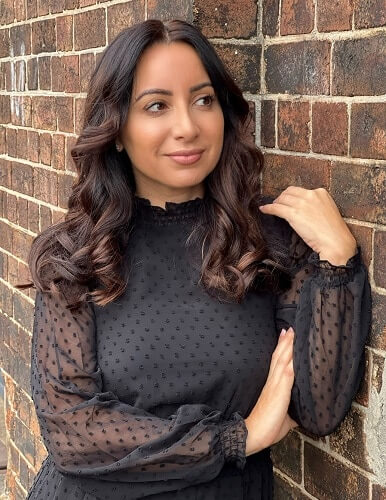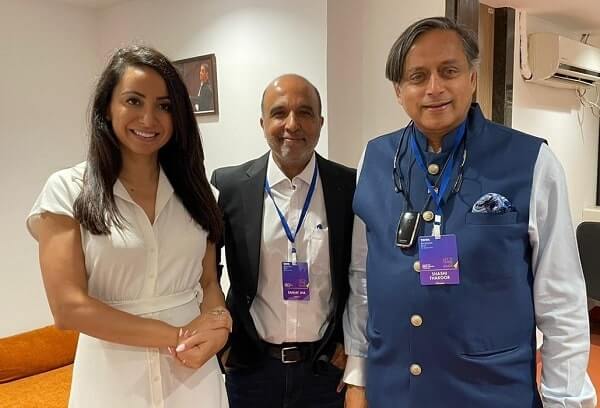Sydney writer and broadcaster Antoinette Lattouf put out a “not so humble brag” from the Tata Literature Live! Mumbai LitFest last night.
‘I beat Shashi Tharoor in a live debate.’
Up against the venerated orator, she and her teammate politician Sanjay Jha got the better of Tharoor and his teammate tech entrepreneur Anirudh Suri.
The topic? “That social media strengthens democracy.” Tharoor and Suri were for the motion, and Lattouf and Jha against.
“I got the last word and the last laugh from the crowd,” Lattouf noted, in what we’d like to say was a thoroughly bragworthy achievement.
Lattouf is among a powerhouse line-up representing Australia in the 13th edition of the Tata Literature Live! Mumbai LitFest. She has been speaking at the festival about her book How to Lose Friends and Influence White People, and as co-founder of Media Diversity Australia, about increasing cultural and linguistic diversity in Australia’s news landscape.
She spoke to us on the sidelines of the festival.

Tell us the things you are looking forward to while you are on your first trip to India?
This is my first trip to India and after just one day in Mumbai, I’m already in love with the city and its people. I grew up in western Sydney which has a large Indian population so I was already exposed to the wonderful culture, delicious food and warm and hospitable people. Mumbai is what I already knew times a thousand.
In one of the sessions, you will be participating in the debate on social media strengthening democracy. Your thoughts?
In the debate I will be making the case that social media’s promise to be an equaliser and leveller has fallen short. Vulnerable and oppressed people face bullying and harassment online and social media outlets profit from engagement at all costs. Often the content and engagement is divisive – racist, sexist and homophobic. While there are some ways that social media can be used as a mega phone to talk about things like racism and diversity, too often the message is drowned out by bots, foreign interference, disinformation and misinformation.
How can we use social media to effect real change?
This is a multi-billion dollar question and a near impossible feat. Legislation is failing to keep up with technology and social media and it’s so vexed and problematic. How does one control the Internet? Should the Internet be controlled and by whom? Until we can answer these questions, social media is patchy and inconsistent at best on its ability to effect real change.
Do you feel there is diversity, or lack of it, in Indian media?
In India, studies have shown a significant lack of diversity in television news. Upper-caste men are grossly over-represented while women and lower castes have minimal representation. Female voices on panel shows are broadly underrepresented: for every female, there are six men. It seems gender, class and caste are at play when it comes to who gets a platform to tell India’s stories. While Australia and India were both colonised by the British, as societies they are obviously quite different. Australia’s media is very white, often shutting out the one in four Australians from non-European backgrounds. Indigenous Australians have very little visibility and power in our media. However, there is more progress on the gender front, with a growing number of women on boards and in editorial leadership roles.
What India can learn from Australia is to ensure that any diversity and inclusion remedies are intersectional. So, it’s not just about getting more upper caste fair skinned females on-air next to their male counterparts. It’s putting policies in place to ensure that the media plays its integral democratic function – and that’s giving a voice to all Indians.
Given an opportunity to start a conversation on diversity in India, after Australia, where would you begin?
Conversations are already underway in India and there is some research already done that’s trying to quantify the diversity problem. I know of female-led organisations that are trying to shed light on the problem. Grassroots mentoring and connections are very powerful. Women and other minorities in the media often feel very isolated and shut out and I would encourage programs and funding that brings these people together. It sounds so simple, but it can be so empowering to connect with and learn from people who face the same structural barriers.
READ ALSO: Aus media fails the diversity test




